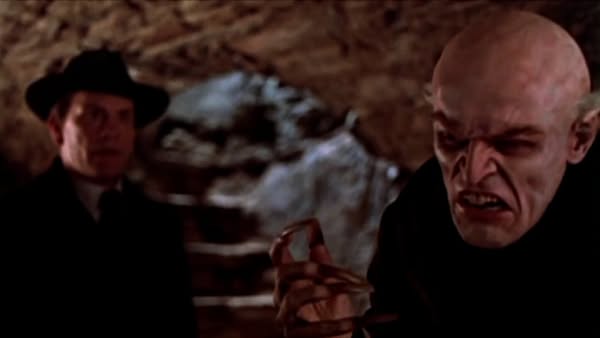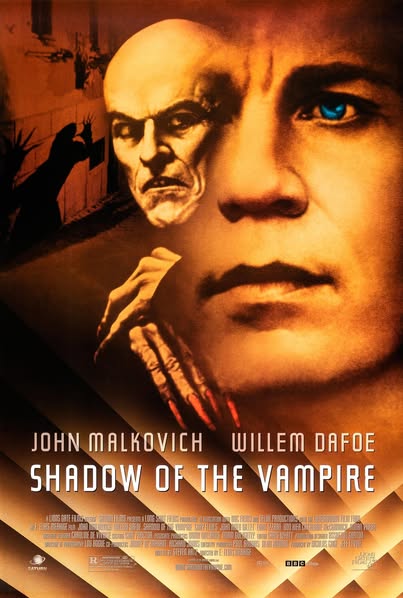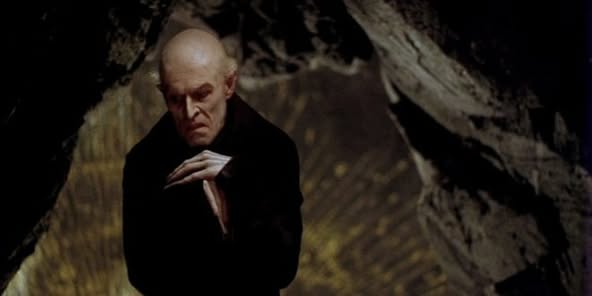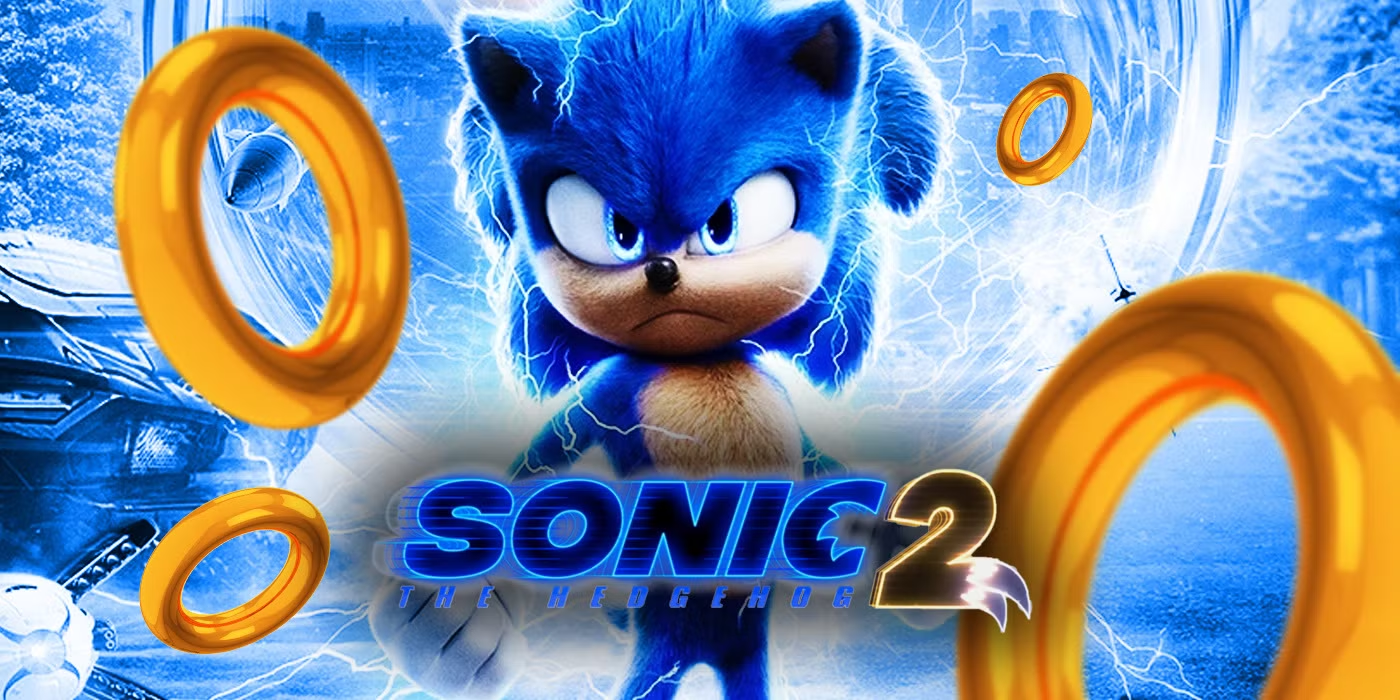Shadow of the Vampire (2000)

Shadow of the Vampire (2000) is a unique and audacious film that blends biographical drama with horror, offering a fictionalized account of the making of the classic silent film Nosferatu (1922). Directed by E. Elias Merhige, this intriguing narrative explores the thin line between reality and fiction, art and madness, while delving into the dark mythology surrounding the creation of one of cinema’s most iconic characters.
The story centers on the tumultuous production of Nosferatu, focusing on the enigmatic German actor Max Schreck (Willem Dafoe), who is cast as Count Orlok. As the film progresses, it becomes clear that Schreck is not merely acting; he is a real vampire, immersing himself in the role to an unsettling degree. The director, F.W. Murnau (John Malkovich), is desperate to create a masterpiece and turns a blind eye to Schreck’s increasingly bizarre behavior, leading to a series of chilling and darkly humorous events.

Shadow of the Vampire is primarily classified as a horror film, but it also incorporates elements of dark comedy and drama, creating a multifaceted viewing experience. Merhige’s direction is both stylish and atmospheric, capturing the eerie essence of early cinema while cleverly intertwining the mythos of vampirism with the struggles of artistic creation. The film’s pacing allows for a gradual build-up of tension, culminating in a thrilling exploration of obsession and the cost of artistic integrity.

Willem Dafoe’s performance as Max Schreck is nothing short of mesmerizing, earning him an Academy Award nomination for Best Supporting Actor. He embodies the character’s eerie charisma and unsettling demeanor, blurring the lines between genius and madness. John Malkovich delivers a compelling portrayal of Murnau, capturing the director’s ambition and desperation as he grapples with the consequences of his artistic choices.
The film’s cinematography pays homage to the visual style of silent films, utilizing lighting and composition that evoke the era while enhancing the overall atmosphere. The haunting score further complements the film’s tone, immersing viewers in its gothic aesthetic.

Ultimately, Shadow of the Vampire invites viewers to ponder the nature of creativity and the sacrifices artists make in pursuit of their vision. It raises intriguing questions about the relationship between art and the dark forces that can accompany the creative process.
In summary, Shadow of the Vampire is a captivating and thought-provoking film that blends horror and drama in a fascinating exploration of early cinema. With its standout performances, stylish direction, and rich themes, it stands as a unique entry in the genre, celebrating the legacy of Nosferatu while inviting audiences to reflect on the nature of art and obsession.











